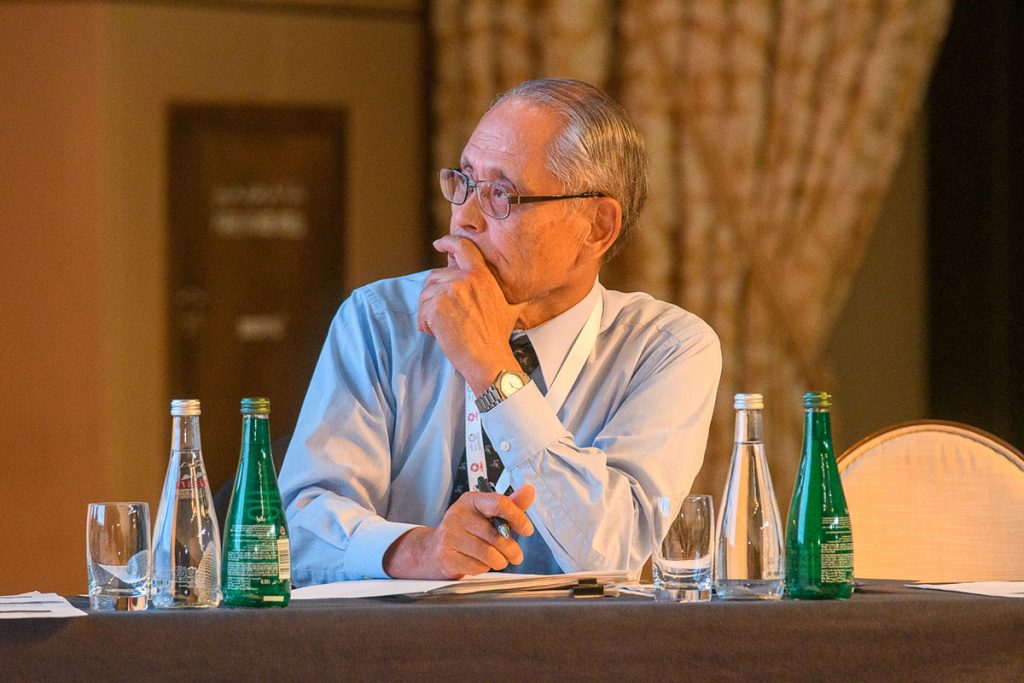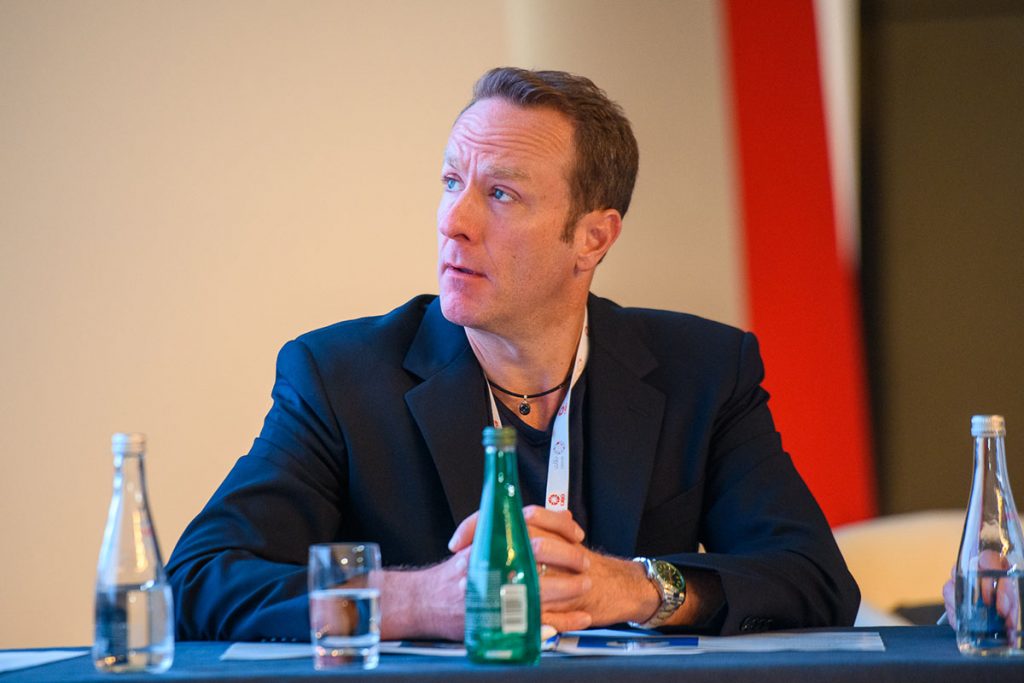ABOVE: Pearl Commission President Kenneth Scarratt addressing the body’s meeting at the CIBJO Congress on November 20. He is flanked by Jeremy Shepherd (left) of the Cultured Pearl Association of America’s (CPAA) and Shigeru Akamatsu, Pearl Commission Vice President.
NOVEMBER 20, 2019
With the 2019 CIBJO Congress taking place in Bahrain, a historic pearling centre and most probably the world’s most prolific producer of natural pearls, the request by an American association that the use of the word “cultured” be reconsidered came to many as a surprise.
Just prior to the congress, the Cultured Pearl Association of America (CPAA) sent a letter suggesting that the term “cultured” could lead consumers to believe that they were laboratory-created. They asked that it be deleted from the CIBJO Blue Book rules as a required qualifier.
However, following lengthy discussions, the CPAA withdrew its request to delete the word “cultured” as a qualifying term for “cultured pearls” but suggested that the term “farmed” be introduced into the Pearl Book, as an alternative to the use of “cultured.”
According to the CPAA proposal, the terms “cultured” or “farmed” shall be used to describe pearl created with human intervention. These words shall be conspicuous and immediately precede the word “pearl”. The English term “farmed pearl” may be used synonymously with cultured pearl, however where there is no acceptable local direct translation of the English terms “cultured pearl” or “farmed pearl”, then only the translation of the term cultured pearl shall be used.
CIBJO Commission President Kenneth Scarratt pointed out that the letter from CPAA had been sent electronically and was not received within the 90-day time-frame required by CIBJO’s for a resolution to be considered. Consequently, no immediate action will be taken.
“CIBJO’s main concern is consumer confidence and whatever the result of our talks we must concentrate on that,” Mr Scarratt said.
Another agenda item involved Keshi terminology.
Mr Scarratt told the Commission meeting that the first mention of Keshi was in 1883, and it referred specifically to small natural pearls in Japanese waters.
“It is a fact that the pearling industry has corrupted the usage of the original Japanese term ‘Keshi’ in common with many other words within the English and other languages, and we need more clearly to redefine its use in the Pearl Book.
He suggested that saltwater non-bead cultured pearls of any size should be termed “(optionally the name of the producing mollusk) keshi cultured pearls” when produced in and around the gonad in cultured pearl sacs, regardless of the producing mollusc.”
Saltwater natural pearls of less than 2 millimetres in size should be termed “natural seed” pearls when produced in naturally formed pearl sacs, regardless of the producing mollusk
Mr Scarratt then went over other amendments to the Pearl Book all of which were accepted by the commission.







